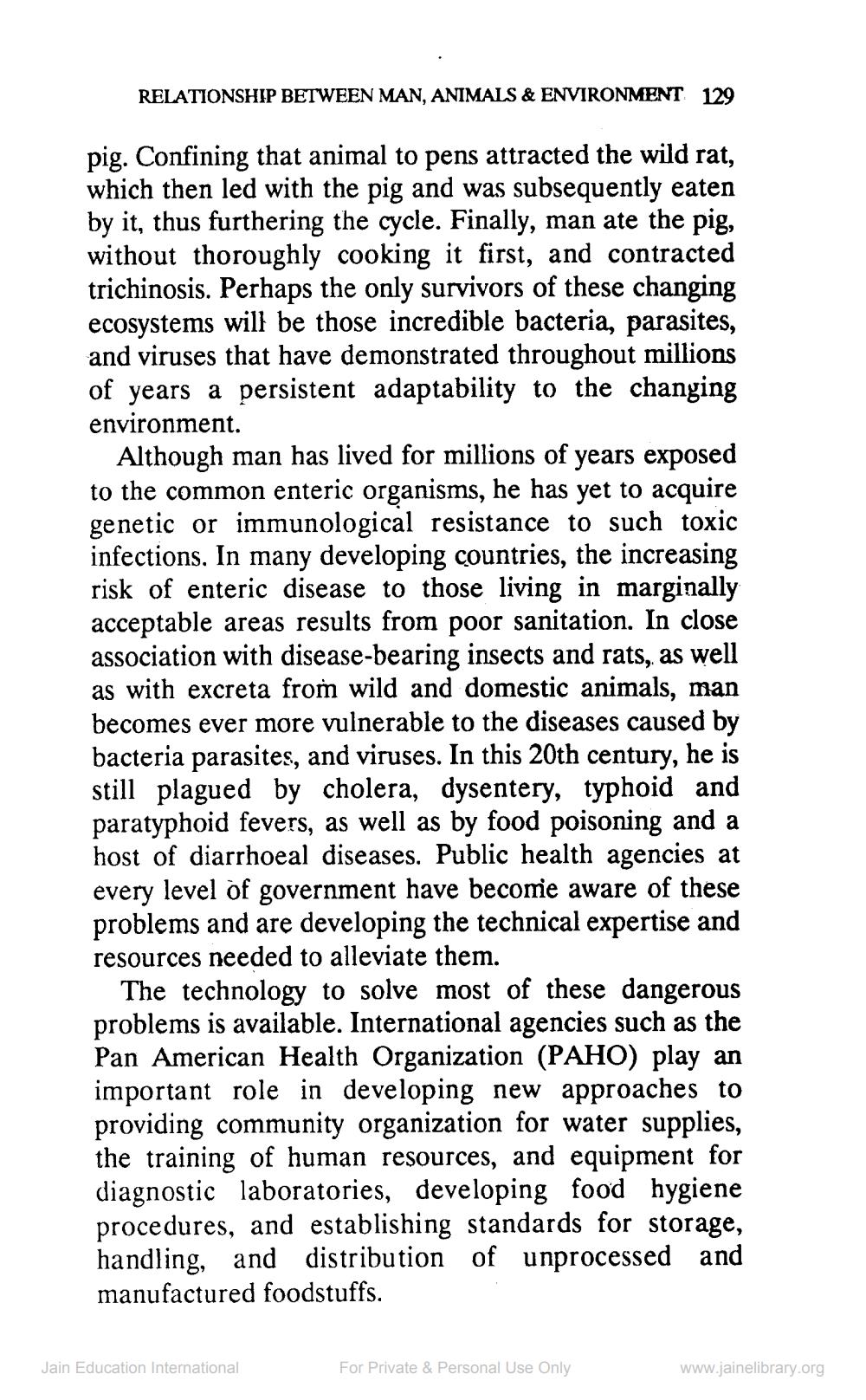________________
RELATIONSHIP BETWEEN MAN, ANIMALS & ENVIRONMENT 129
pig. Confining that animal to pens attracted the wild rat, which then led with the pig and was subsequently eaten by it, thus furthering the cycle. Finally, man ate the pig, without thoroughly cooking it first, and contracted trichinosis. Perhaps the only survivors of these changing ecosystems will be those incredible bacteria, parasites, and viruses that have demonstrated throughout millions of years a persistent adaptability to the changing environment.
Although man has lived for millions of years exposed to the common enteric organisms, he has yet to acquire genetic or immunological resistance to such toxic infections. In many developing countries, the increasing risk of enteric disease to those living in marginally acceptable areas results from poor sanitation. In close association with disease-bearing insects and rats, as well as with excreta from wild and domestic animals, man becomes ever more vulnerable to the diseases caused by bacteria parasites, and viruses. In this 20th century, he is still plagued by cholera, dysentery, typhoid and paratyphoid fevers, as well as by food poisoning and a host of diarrhoeal diseases. Public health agencies at every level of government have becomie aware of these problems and are developing the technical expertise and resources needed to alleviate them.
The technology to solve most of these dangerous problems is available. International agencies such as the Pan American Health Organization (PAHO) play an important role in developing new approaches to providing community organization for water supplies, the training of human resources, and equipment for diagnostic laboratories, developing food hygiene procedures, and establishing standards for storage, handling, and distribution of unprocessed and manufactured foodstuffs.
Jain Education International
For Private & Personal Use Only
www.jainelibrary.org




